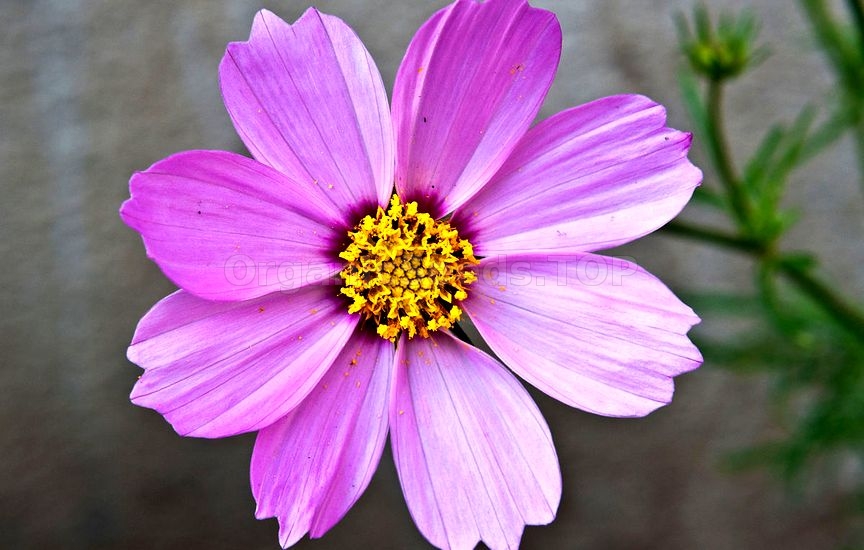Tips For Growing Cosmos |
 Cosmos plants (Cosmos bipinnatus) are an essential for many summer gardens, reaching varying heights and in many colors, adding frilly texture to the flower bed. Growing cosmos is simple and cosmos flower care is easy and rewarding when single or double blooms appear on stems reaching 1 to 4 feet. Cosmos plants may be featured at the back of a descending garden or in the middle of an island garden. Taller varieties may need staking if not planted in an area protected from wind. Planting cosmos flowers results in many uses of the specimen, such as cut flowers for the indoor display and backgrounds for other plants. Cosmos can even be used as screens to hide unsightly elements in the landscape. How to Grow Cosmos Flowers When planting cosmos flowers, locate them in soil that has not been heavily amended. Hot dry conditions, along with poor to average soil are optimum conditions for growing cosmos. Cosmos plants are usually grown from seed. Scatter seeds of the cosmos onto a bare area in the location where you wish to have growing cosmos. Once planted, this annual flower self-seeds and will provide more cosmos flowers in the area for years to come. Daisy-like flowers of the cosmos plant appear atop tall stems with lacy foliage. Cosmos flower care can include deadheading of flowers as they appear. This practice forces growth lower on the flower stem and results in a stronger plant with more flowers. Cosmos flower care can include cutting flowers for indoor use, achieving the same affect on the growing cosmos plant. Varieties of Cosmos More than 20 varieties of cosmos plants exist, both annual and perennial varieties. Two annual varieties of cosmos plants are primarily grown in the U.S. Cosmos bipinnatus, called the Mexican aster and Cosmos sulphureus, yellow cosmos. Yellow cosmos is somewhat shorter and more compact than the commonly used Mexican aster. Another interesting variety is Cosmos atrosanguineus, the chocolate cosmos. If there are no cosmos to self-seed in your flower bed, get some started this year. Direct sow this frilly flower into a bare area of the bed that will benefit from tall, colorful, easy care blooms. Cosmos Flower Diseases – Reasons Cosmos Flowers Are Dying Cosmos are Mexican natives that are easy to grow and thrive in bright sunny areas. These undemanding blooms rarely have any issues but a few diseases can pose problems. Cosmos plant diseases range from fungal to bacterial and into insect vectored viruses. Controlling insects, providing proper irrigation and planting healthy plants can minimize any problems with cosmos plants. Common Diseases of Cosmos There are over 25 species of cosmos, or Mexican aster as it is also known. Cosmos is in the Aster family of plants and its blooms have a distinctive resemblance to that plant. Cosmos reseeds itself freely and is tolerant of low moisture and fertility soils. It is a very hardy plant with few special needs and it will return year after year to brighten the garden space. If your cosmos flowers are dying during the growing season, it’s time to investigate some possible causes and save these long blooming feathery foliaged plants.
Fungal Cosmos Plant Diseases Two of the most common fungal diseases of plants, Fusarium wilt and powdery mildew, can also plague cosmos plants. Fusarium wilt not only causes the plant to wilt but discolors the stems and foliage. If you dig up the plant, you will see a pink mass on the roots. The whole plant, unfortunately, is going to die and should be destroyed to avoid spreading the fungus.
Powdery mildew spores float on the breeze and will attach to any host plant in shade. The fungus forms a powdery white coating over leaves, which will eventually cause foliage to yellow and drop off if left untreated. Plants with good ventilation, in bright light and that are watered in the day so foliage can dry are not as susceptible to fungal diseases of cosmos. You can also use a horticultural fungicide to fight the disease. Bacterial Problems with Cosmos Plants Bacterial wilt is one of the classic cosmos flower diseases. As it might seem, it is a bacterial disease which causes stems to wilt at the base. The entire stem and flower will become infected and finally the root system. You must dig up the plant and destroy it, as there is no cure. Aster yellows is one of the diseases of cosmos that affects any plant in the Aster family.
It is transmitted by leafhoppers, those tiny insects that appear to be shrunken grasshoppers. The disease is causes by phytoplasma and, if infected, you will see cosmos flowers are dying after becoming distorted and stunted. The foliage will present with yellowed mottling, indicating the feeding sites of the vectors. Infected plants should also be destroyed, as there is no cure. Insect Vectors That Cause Cosmos Flower Diseases In the garden, our plants just represent one big buffet to bugs. Cosmos are probably like candy to some insect pests. Most don’t do any significant damage but a few transmit viruses and disease during their feeding activity. We already mentioned leafhoppers, which who can also transmit curly top virus, attacking leaves and roots. Thrips transmit tomato spotted virus, a disease with no cure. Buds are delayed and distorted and when they do open, they have spotted, ringed or lined petals. Other sucking insects can maim the plant and diminish health. Use a good horticultural soap and quick blasts of water during the day to remove many of the pests. You may need:«Picotee» - Organic Cosmos Seeds |
|
|
